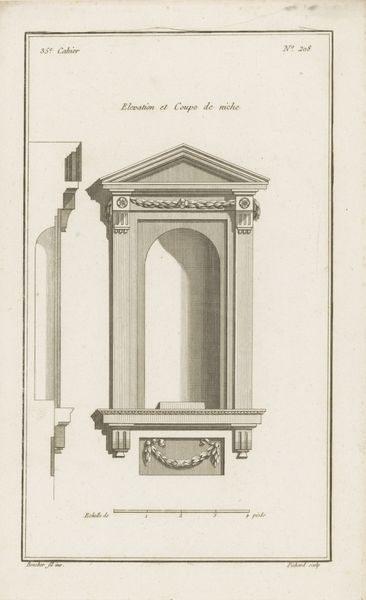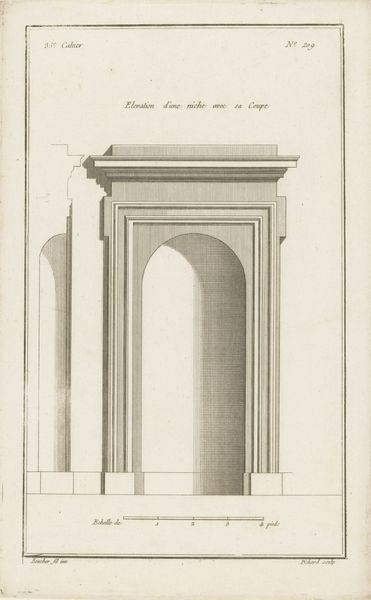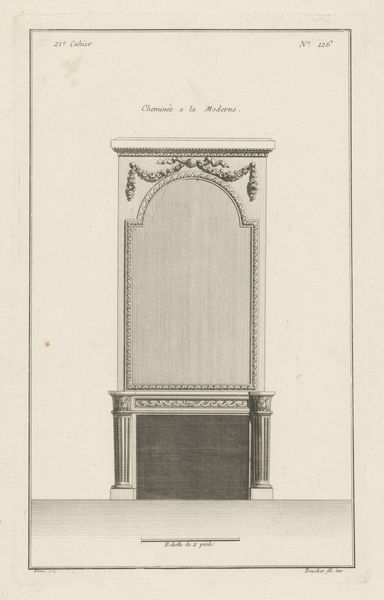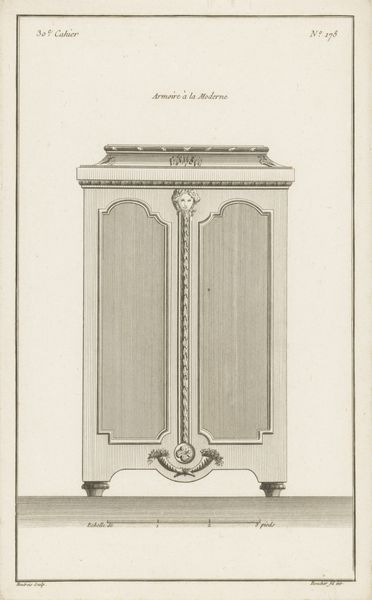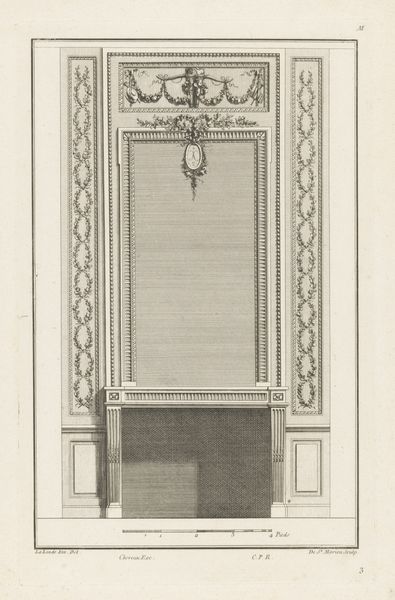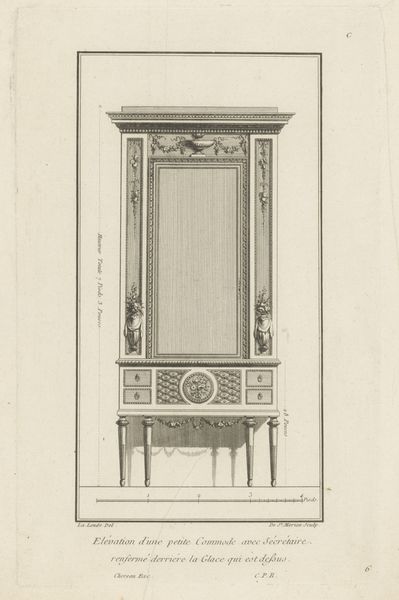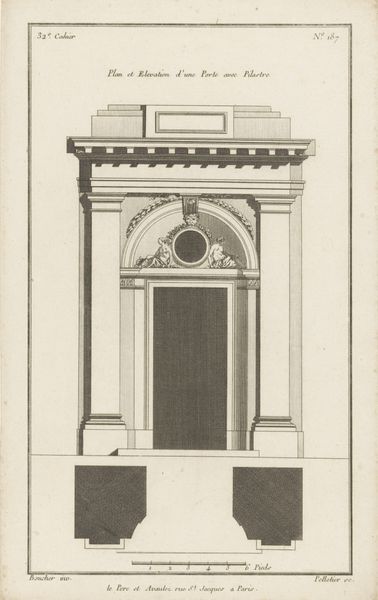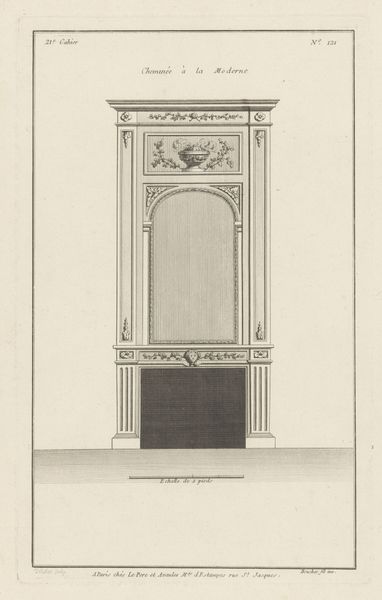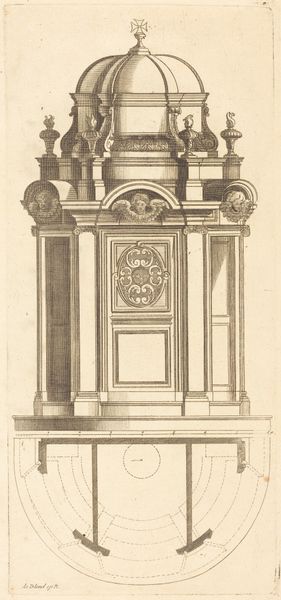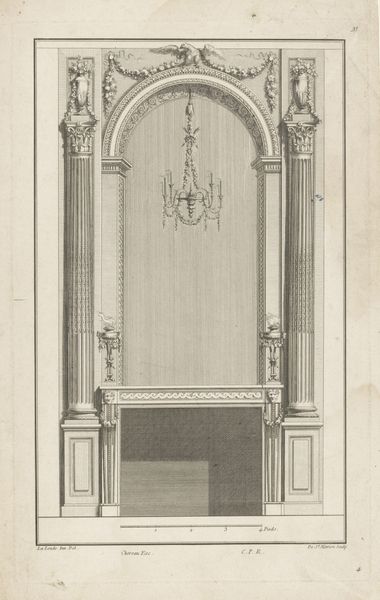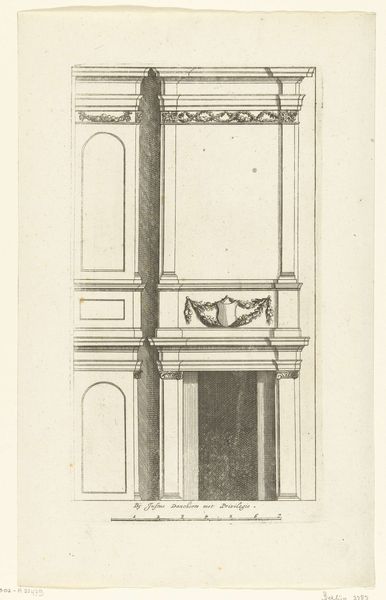
drawing, print, engraving, architecture
#
drawing
#
neoclacissism
# print
#
geometric
#
line
#
academic-art
#
engraving
#
architecture
Dimensions: height 328 mm, width 203 mm
Copyright: Rijks Museum: Open Domain
Curator: Jean-Baptiste Bichard, active in the latter half of the eighteenth century, made this detailed engraving sometime between 1772 and 1779. It's titled "Nis met guirlande en draperie," which translates to "Niche with garland and drapery," currently held at the Rijksmuseum. Editor: First impression? Serene emptiness, framed with obsessive precision. It's a void dressed up in frills. Almost yearning, isn’t it? Like a stage waiting for its star, only the play's been cancelled. Curator: The "Elevation et Coupe de niche" indicates a blueprint of sorts—a plate likely from an architectural pattern book. Bichard was working in the heart of the Neoclassical movement, after all, when there was a real fervor to apply ancient architectural principles to contemporary building designs. Editor: You can see the Neoclassical obsession with order. The perfect symmetry, the garland carefully placed. And the drapery at the bottom--is it attempting warmth in such a sterile setting? I imagine architects flipping through this like it’s some style catalog. A building a la carte! Curator: These engravings were indeed influential in spreading Neoclassical taste and construction methods. Remember, before photography, detailed prints like these were critical for disseminating design. It helped standardize the look of public and private spaces across Europe and beyond. This particular print demonstrates the architectural structure of niches, an indispensable decorative feature during the Neoclassical age. Editor: Knowing that, it gives me a slightly uneasy feeling. So much emphasis on structure, as though the perfect ratio, perfect line, could be calculated... as though human life can be engineered like a building, emotions tucked neatly into alcoves, emotions properly framed, managed... Is this what modernity feels like at its root? A quest for control of spaces to control us, its inhabitants? Curator: An astute observation! Architectural patterns like these weren’t neutral. They represented a belief in order, reason, and perhaps implicitly, a particular social order. The wealthy and powerful especially would have turned to drawings like these to subtly (or not so subtly) enforce and embed authority within physical spaces. It also says so much about museums today and how architectural patterns were once revered! Editor: Well, I still find the void itself kind of alluring, that blank space promising any projection you can conjure. But I must agree, seeing that little scale bar down there kind of chills me, like, who knows, someday they might scale up all our lives by blueprints. That makes me ready to depart and consider how architectural and authoritarian projects relate. Thanks for sharing these reflections.
Comments
No comments
Be the first to comment and join the conversation on the ultimate creative platform.
